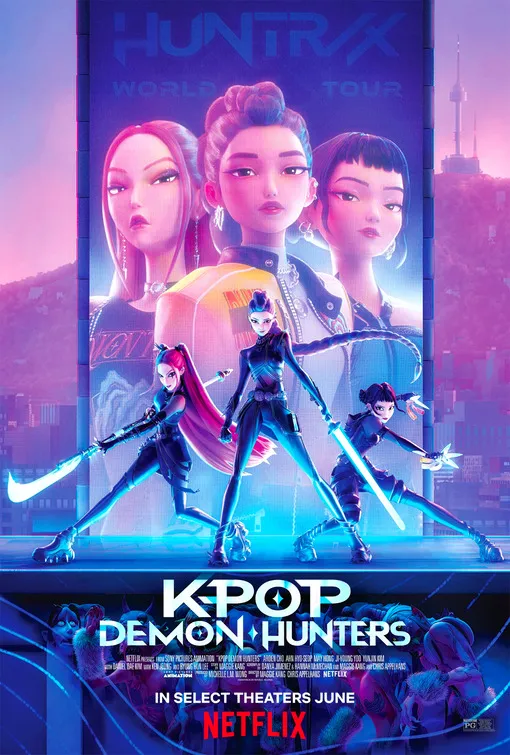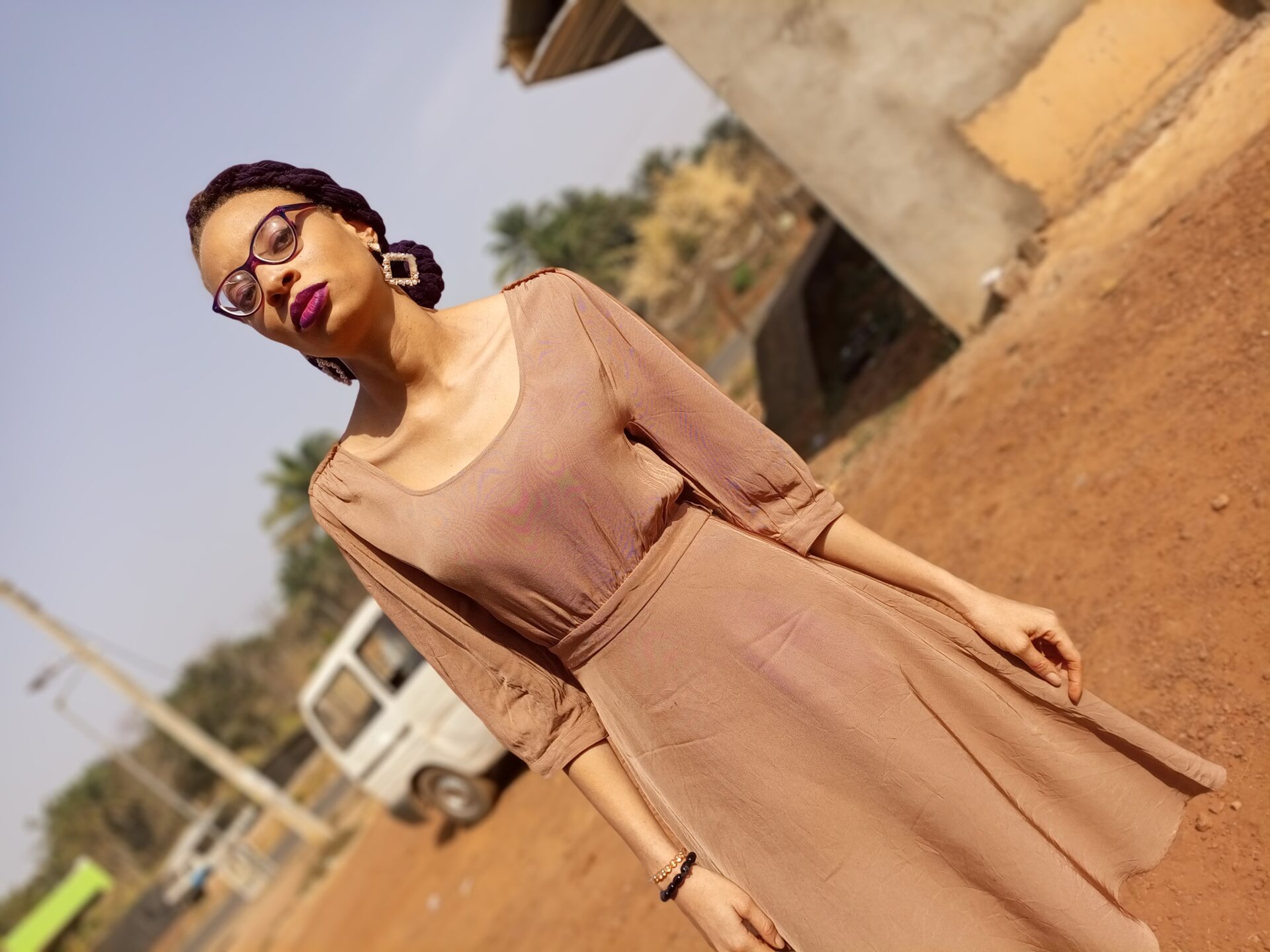
Netflix, Opinions
Since it has already been watched more than 320 million times,it’s only fair we talk about what the movie could have done better.

As anyone could have predicted, Rumi, Zoey, Mira, and Jinu’s costumes from K-Pop Demon Hunters ruled Halloween this season.
In June, Netflix’s K-pop Demon Hunters reached critical acclaim, despite minimal pre-release buzz. The film’s soundtrack topped global charts and broke Spotify records. According to The New York Times, the animation helped boost Netflix’s revenue. Now, the streaming giant plans a spooky-season theatre rerelease.
Since it has already been watched more than 320 million times (including by me—four times, thank you very much), it’s only fair that after going to the theatres for round two, we talk about what the movie got right and what it could have done better.
First, let’s discuss the aspects of the movie that did exceptionally well.
Honestly, K-Pop Demon Hunters didn’t try to overcomplicate things; it knew exactly what it wanted to be and leaned into it. The movie was straightforward yet exceptionally well done! The story moved briskly, wasting no time on filler or unnecessary subplots, and the emotional beats actually landed.
It’s refreshing to see studios giving a chance to original ideas instead of relying on an endless loop of remakes, sequels, and reboots.

This is one of the film’s strongest points. It had just the right amount of Korean language and cultural nods sprinkled throughout, enough to feel authentic without alienating international viewers.
From the choreography style to the emotional pacing and dialogue, you could feel the influence of K-drama storytelling. It was dramatic, heartfelt, but never overdone.
Even though K-Pop Demon Hunters was an American production, the voice cast being predominantly Korean was a huge win. Animation has often struggled with proper representation behind the mic, so hearing authentic accents, intonations, and deliveries brought a new level of realism to the characters, giving the story cultural credibility.
Ahn Hyeo Seop, Arden Cho, Lee Byung-hun, as well as the rest of the cast (except for Liza Koshy), being Korean or Korean-American, lent authenticity to the characters being portrayed, as opposed to Disney’s all-American cast for Mulan (1998).
Each song was intentional, catchy, and well-crafted, while also advancing the story. The lyrics were extensions of the characters’ emotions, allowing both kids and adults to enjoy the soundtrack for different reasons. They contained clues and Easter eggs that made every rewatch feel worthwhile.
It’s been a while since we’ve had music this good in animation—probably not since Frozen or Turning Red. EJAE, along with the rest of the team, put in a lot of work and spirit, and it paid off.
K-pop Demon Hunters quietly corrected some of the troubling portrayals often seen in idol-centred media. The girls weren’t hypersexualised or starved into an unrealistic beauty standard, which was a welcome relief and shouldn’t be overlooked.
Those girls ate, had time to rest and reset, and the industry has a thing or two to learn from this movie.
Truthfully, ninety minutes isn’t a lot of time for all the storytelling the filmmakers clearly wanted to do. However, even within that limit, there were a few aspects that could have been improved to add more depth and impact to the story.

With animation, there’s endless room for imagination and creativity, things that live-action could never pull off. That’s why the opening sequence, where they fall from a plane straight onto a concert stage with the song blaring, hit so hard. That was cinema.
The bathhouse fight scene was also decent, but every other battle felt… basic. For a movie about demon hunters and demons, the fights could’ve been more inventive, especially with the kind of talent involved in the animation.
Most of the character development and growth from Mira and Zoey is mainly through songs, but they lack substantial on-screen development. Rumi had her decisive moment when she decided not to hide anymore, but there was little insight into Mira’s and Zoey’s backgrounds or growth. They’re such fun characters that deserve more depth for a satisfying story.
Selene’s backstory was mentioned only in glimpses. There was potential for a richer explanation of her motivations. Offering more details about her would have strengthened the character and the narrative.

Gwi-Ma had significant potential but became just a smoky cloud in the underworld, lacking depth. His motivations, like why he wants souls or what he does with them, were unclear.
The film didn’t explain whether all demons were corrupt or inherently born that way, leaving unanswered questions that could have made the threat more compelling.
The movie’s themes of identity and redemption were barely explored through the demons’ stories. The narrative didn’t clarify whether all demons could be redeemed or only select ones.
The Saja boys, though central to the story development, were barely given names or storylines, missing the opportunity to humanise the “villains” and deepen the film’s moral complexity.
Finally, the ending could have teased something bigger. Instead of tying things up neatly, the film could have hinted that Gwi-Ma’s defeat wasn’t complete or that the girls’ powers changed unexpectedly. We know Netflix isn’t done with this story.
A few weeks ago, Netflix announced new partnerships with Mattel and Hasbro to release K-pop Demon Hunters toys and games in early 2026.
The franchise isn’t slowing down anytime soon. So, while Netflix squeezes every drop from its shiny new hit, the rest of us can only hope they channel some of that energy into a sequel, or maybe a prequel, with a story that takes everything we loved about the first film and turns it up a notch.

Peace is an avid book lover whose biggest selling point is her desire to share everything good she finds with everyone she loves. She writes both fiction and non-fiction professionally, but truly finds fulfilment when she is free to let her imagination fly. She loves learning new things, listening to good music, eating good food, reading all the good books, watching good movies, and sleeping. She lives every day knowing that there is an amazing new thing to discover!